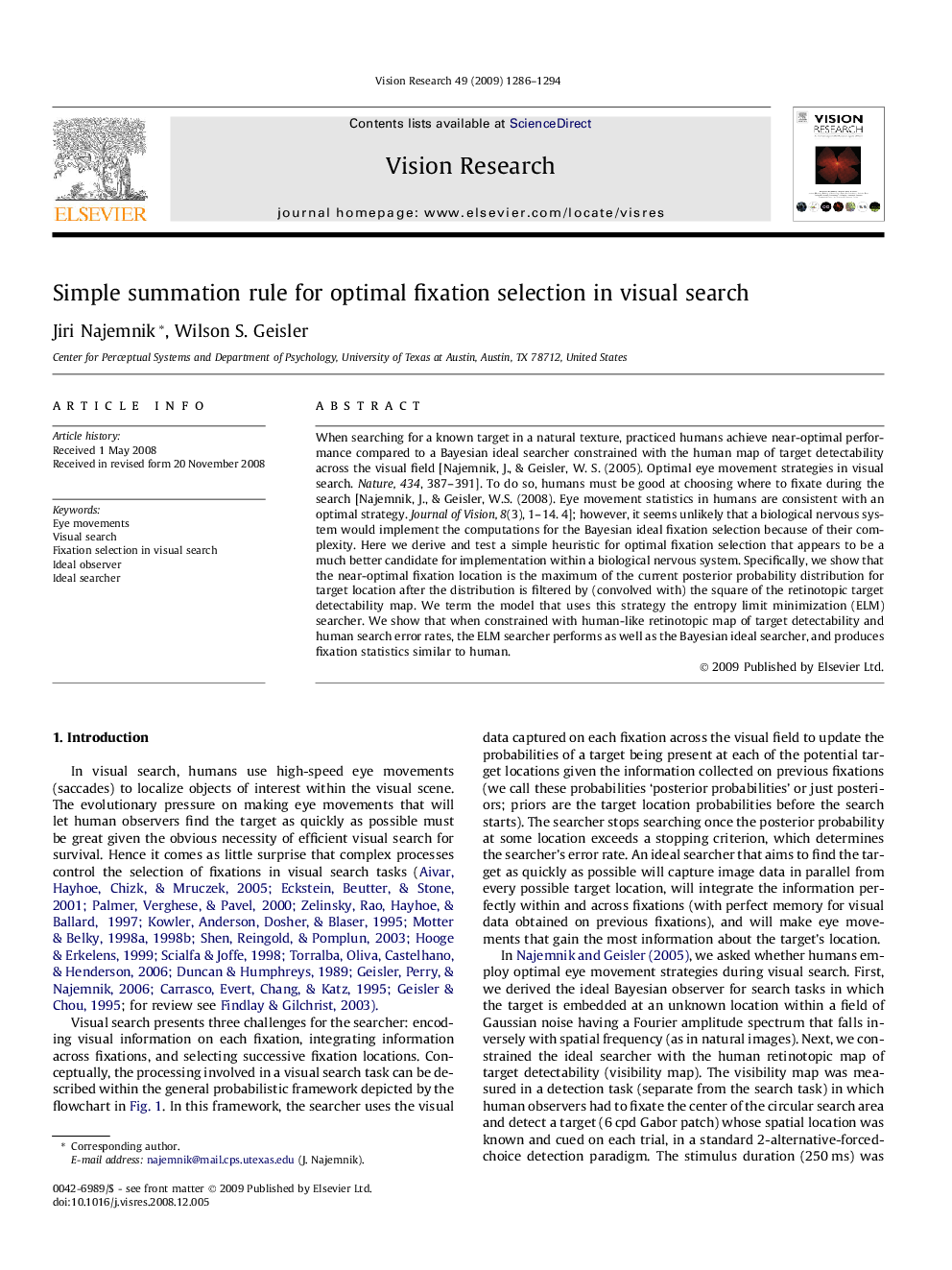| Article ID | Journal | Published Year | Pages | File Type |
|---|---|---|---|---|
| 6203885 | Vision Research | 2009 | 9 Pages |
When searching for a known target in a natural texture, practiced humans achieve near-optimal performance compared to a Bayesian ideal searcher constrained with the human map of target detectability across the visual field [Najemnik, J., & Geisler, W. S. (2005). Optimal eye movement strategies in visual search. Nature, 434, 387-391]. To do so, humans must be good at choosing where to fixate during the search [Najemnik, J., & Geisler, W.S. (2008). Eye movement statistics in humans are consistent with an optimal strategy. Journal of Vision, 8(3), 1-14. 4]; however, it seems unlikely that a biological nervous system would implement the computations for the Bayesian ideal fixation selection because of their complexity. Here we derive and test a simple heuristic for optimal fixation selection that appears to be a much better candidate for implementation within a biological nervous system. Specifically, we show that the near-optimal fixation location is the maximum of the current posterior probability distribution for target location after the distribution is filtered by (convolved with) the square of the retinotopic target detectability map. We term the model that uses this strategy the entropy limit minimization (ELM) searcher. We show that when constrained with human-like retinotopic map of target detectability and human search error rates, the ELM searcher performs as well as the Bayesian ideal searcher, and produces fixation statistics similar to human.
